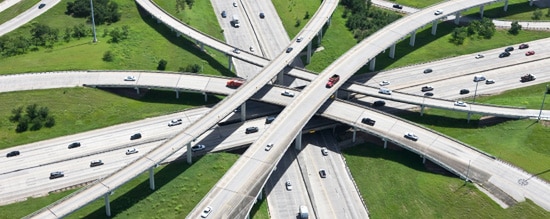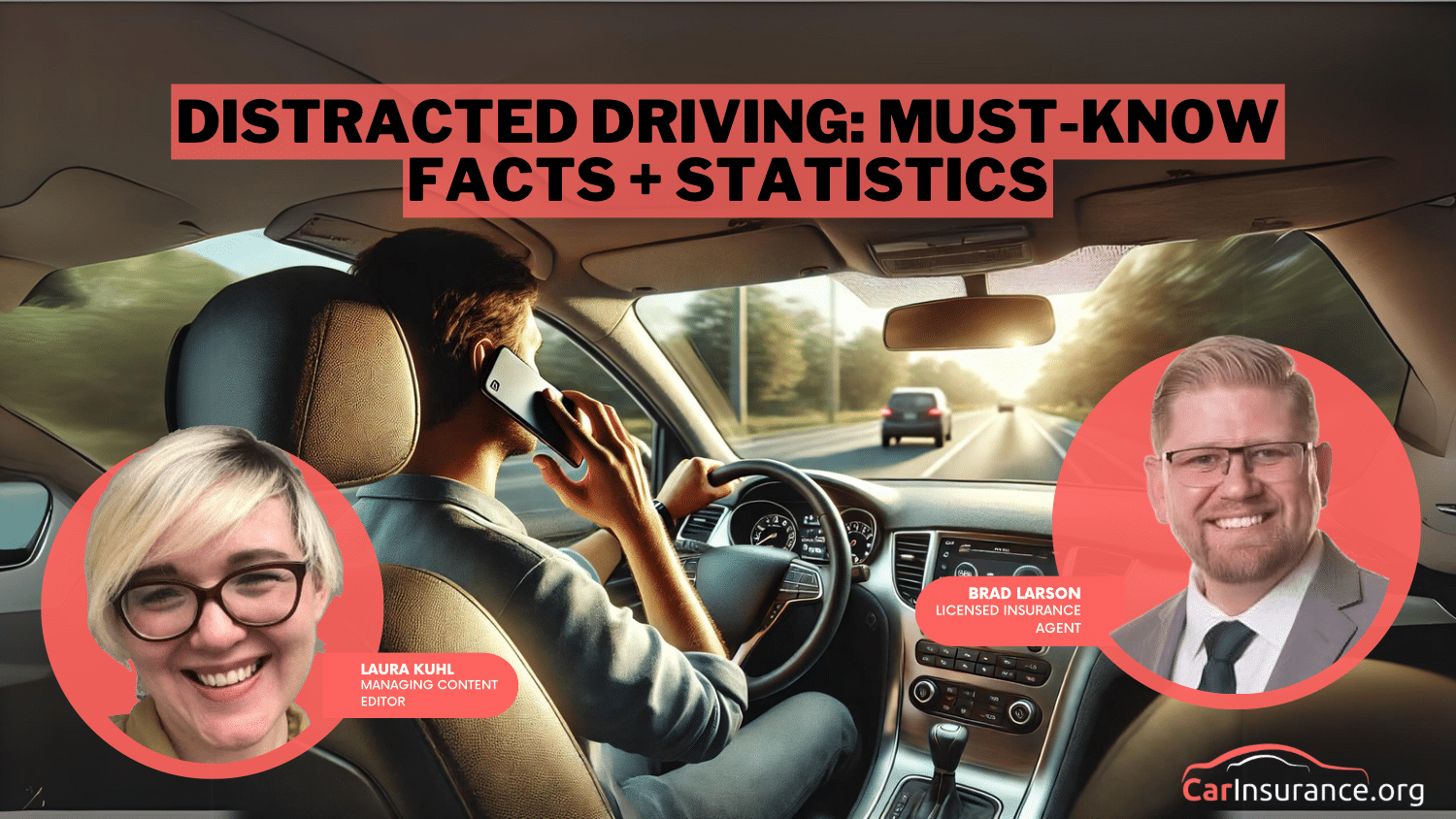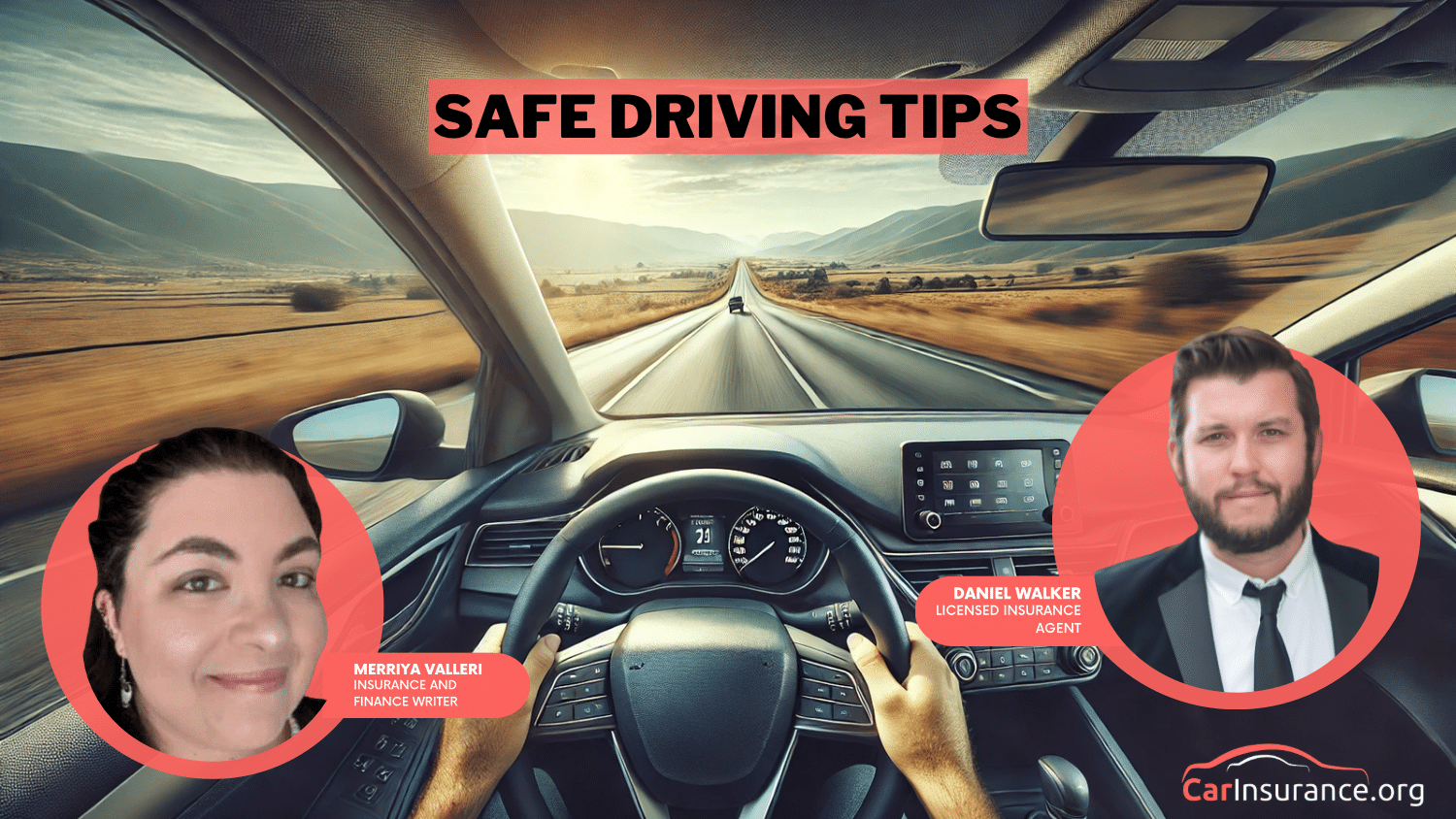How to Drive Safely, No Matter the Time of Day
Driving can have different challenges depending on the time of day. That's why learning how to drive safely at all times is important. Scroll down for our tips on how to drive safely no matter the time of day.
Read more Secured with SHA-256 Encryption




Table of Contents
Table of Contents


Head of Content
Meggan McCain, Head of Content, has been a professional writer and editor for over a decade. She leads the in-house content team at Quote.com. With three years dedicated to the insurance industry, Meggan combines her editorial expertise and passion for writing to help readers better understand complex insurance topics. As a content team manager, Meggan sets the tone for excellence by guiding c...
Meggan McCain


Licensed Insurance Agent
Brad Larson has been in the insurance industry for over 16 years. He specializes in helping clients navigate the claims process, with a particular emphasis on coverage analysis. He received his bachelor’s degree from the University of Utah in Political Science. He also holds an Associate in Claims (AIC) and Associate in General Insurance (AINS) designations, as well as a Utah Property and Casual...
Brad Larson
Updated July 2025
When we sit down and really think about the odds involved, driving is probably the most dangerous thing each of us does on a daily basis. An average day sees about 110 people dying on roadways in the United States. While that may seem like a small number, it’s greater than the likelihood of being in a plane wreck, being bitten by a shark, and much more. That’s why learning how to drive safely is so important.
At CarInsurance.org, we’d like every driver and passenger to be safe. So we’re offering our tips for safe driving, no matter what time of day you’re driving. When you’re driving can make a big difference in safety, but we can’t always choose to drive only at best times to drive or the safest days to drive. That’s why it’s important to learn some tricks for how to drive safely at the most dangerous times. We’ll have tips throughout the day, with a special emphasis on morning commutes, rush hour and driving at night.
How to Drive Safely in The Morning
While we’re all usually in our rush to get to work in the morning, from a statistical standpoint, morning hours are the best times to drive. The numbers of fatalities from car crashes are the lowest during the time period from 6:00 am until 11:59 am. However, this doesn’t mean the dangers of driving aren’t present during these times.
Our tips for safety during your morning commute include:
- Give yourself plenty of time to make the trip. This not only allows you to adapt to the weather situations, but also ensures that you do not have to rush. When people are in a hurry, they often make mistakes they otherwise wouldn’t.
- Utilize 511 or other services so you know if there are traffic incidents or delays on your route.
- Be courteous, especially in traffic jams or when movement comes to a standstill. Honking your horn and other such activities are usually counterproductive. While it may seem counterintuitive, letting others merge when they signal may also save you time and prevent accidents.
- Control your speed. Simple math demonstrates that the few seconds you may save by speeding are outweighed by the decrease in fuel economy and the extra risk you’re introducing to yourself and other drivers. Generally, you should follow the speed limit. If there are traffic jams or other delays, you would need to go slower.
- Consider carpooling or other forms of public transportation if possible. (For more information, read our “Carpooling: Saving Time, Money, and the Planet“).
- Ensure you don’t tailgate by keeping a space cushion between yourself and the car in front of you. Give yourself time to react.
Free Insurance Comparison
Compare Quotes From Top Companies and Save
Secured with SHA-256 Encryption
How to Drive Safely in Rush Hour Traffic
The sheer volume of traffic during rush hour in many cities in the United States makes for difficult commutes home for many drivers. Congestion and traffic jams can quickly lead to short fuses and in extreme cases, full-on road rage.
To make it through rush hour drives, we suggest:
- Always allow for extra travel time. No matter if you have to go across town for an important business meeting or if you’re simply trying to get home, remember that budgeting extra time can help you ensure you get where you are going on time, safely. Unfortunately, impatience can undermine even the best driving skills.
- Because there are more cars on the road, be especially vigilant when merging or changing lanes. Be aware of your car’s blind spots. Look to the side and behind, and signal before you change lanes. Under no circumstances should you simply attempt to weave in and out of traffic. Especially in bad weather, this could lead to dangerous situations quickly. Stick to your local traffic laws with reason.
- Go with the flow. Maintain a speed similar to other cars, but leave yourself room to react by not following others too closely.
- Stay calm and be a courteous driver. Take deep breaths and do not allow yourself to be angered, no matter the traffic situation. Don’t separate yourself from other drivers; remember that they are humans just like you.
- Use 511 or GPS devices that can inform you of congestion or traffic incidents that will delay your commute. Knowing the conditions ahead of time will allow you to plan an alternate route.
Can you be a safer nighttime driver?
Nighttime is not the right time when it comes to driving safety. There are fewer cars on the road, but according to the National Highway Transportation Safety Administration (NHTSA), almost one-half of all fatal accidents occur at night. The rate of fatal accidents per miles driven is three times as high at night as during the daylight hours.
Part of the increase in dangers at night can be directly attributed to human factors such as impaired driving. From 9:00 pm until 6:00 am, 55 percent of all fatal accidents in the United States involve alcohol-impaired drivers. 32 percent of all fatal accidents involve drivers under the influence, so there is a significant spike in impaired driving once the sun goes down.
Another issue is just the lack of visibility at night. As good as modern headlight designs are, they’re still no replacement for a sunny day. Night driving has significant differences and challenges compared to driving during the day. Your vision will suffer, as you lose the color and contrast of daylight, and your depth perception and peripheral vision also become diminished. This is true even if you don’t have issues with night blindness. Even if you’re not distracted driving, it’s much easier to miss important things in the dark.
But despite the challenges of night driving, you can still be safe. Here are our tips for driving after sunset:
- Adjust the lighting inside your car by keeping your instrument panel illumination at a level that does not affect your vision. You shouldn’t have any other light inside your car, as it can cause glare on your windshield and reduce your night vision. If you’re depending on your cell phone for navigation, make sure to adjust its light as well.
- Avoid glare by looking towards the right side of the road, watching the traffic lines rather than oncoming headlights. Adjust your rearview mirror to the nighttime setting.
- Be courteous with your headlights. Don’t flash high beams at other vehicles as you reduce their driver’s ability to see. Only use fog lamps in combination with your low beams, and only in inclement weather.
- Don’t fall victim to fatigue. Allow fresh air to circulate in the car, and make sure you take breaks when appropriate.
- Ensure your car’s windows are clean, inside and out. Haze or fogged windows will diminish your vision even further.
- Increase following distances between cars ahead of you. Unlike daytime, where a two second cushion may be appropriate, you should have a cushion of five seconds at a minimum to ensure you have time to react to other drivers.
- Keep your eyes moving, looking for the signs of oncoming traffic around curves or over hills.
- Regularly clean your car’s headlights, taillights and signal lights. This helps ensure others can see you, as well as providing you with the best headlight performance.
- Regulate your own speed. Because of the decreases in visibility, traveling at excess speeds is more dangerous at night than during the day. You may not have enough time to stop or react to a situation.
- Don’t let your teen driver drive alone. They need the practice, but especially early on, it should be with supervision. Teens are already trying to figure out the basics of driving and things that come naturally to more experienced road users. Some states have curfews for young drivers. Even if yours doesn’t, don’t be afraid to make this a learning experience.
Read more: How have cars gotten safer in the past 40 years?
Can you make safe driving a habit?
Daily driving is full of habits. You put on your seat belt, adjust your mirrors, and do other things every time you get in the car. Maybe your habits are different. Whatever the case, you start setting habits early. When you have to train yourself to change things, it can take much longer. This is why more people are taking defensive driving courses to get off on the right foot.
Especially when you’re driving at night or another dangerous time, it’s critical to be alert to be a safe driver. Pay attention and be courteous. You can’t always control your fellow drivers, which is where a good insurance policy becomes essential. To get a quote, just use our calculator and enter your zip code.
Get a FREE Quote in Minutes
Insurance rates change constantly — we help you stay ahead by making it easy to compare top options and save.


